Are you tired of using hair products that contain dimethicone? If yes, seek ways to remove it from your hair.
Dimethicone is a type of silicone commonly found in shampoos, conditioners, and styling products that helps create a smooth, shiny appearance by coating the hair. However, its buildup can leave hair feeling heavy, greasy, or dull. Removing dimethicone from hair is essential to restore its natural vibrancy and maintain overall health.
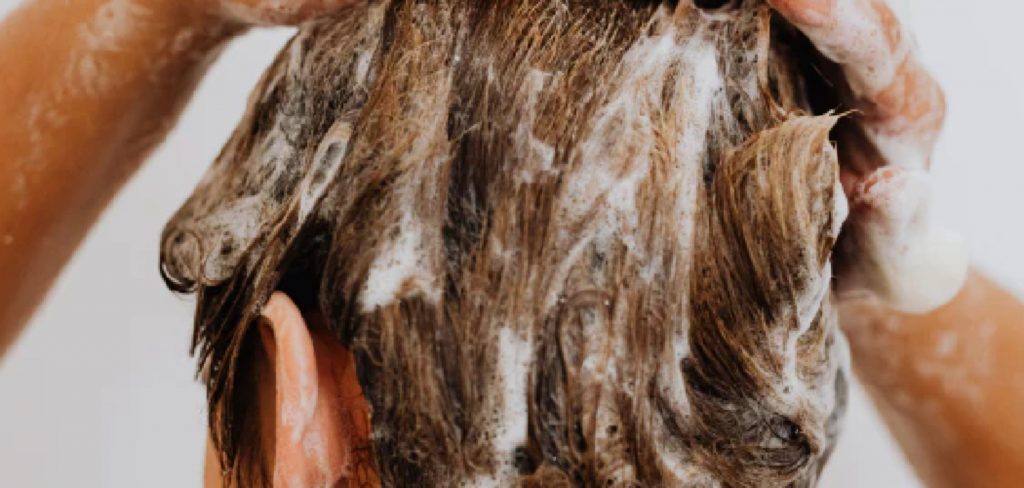
Thankfully, there are effective methods to cleanse the hair of this stubborn residue using the right products and techniques.
This guide on how to remove dimethicone from hair will explore simple and practical steps to help you achieve clean, refreshed hair free from dimethicone buildup.
What Are the Benefits of Removing Dimethicone From Hair?
Before diving into the steps for removing dimethicone, it is essential to understand why it is beneficial. Here are some of the advantages of eliminating dimethicone from hair:
- Improved Hair Health: Dimethicone can coat the hair shaft, leading to product buildup and preventing moisture from penetrating the hair. This can cause dryness, breakage, and dullness in the long run. By removing dimethicone, your hair can absorb more nutrients and moisture, making it healthier and stronger.
- Better Scalp Health: The residue left by dimethicone can clog pores on the scalp and lead to irritation or even dandruff. Removing dimethicone can improve scalp health and reduce potential skin issues.
- Easier Styling: As mentioned earlier, dimethicone coats the hair shaft, making it difficult for other products to penetrate and do their job effectively. Removing this residue will allow your hair to absorb styling products better, giving you more control over your desired style.
What Will You Need?
To successfully remove dimethicone from your hair, you will need the following items:
- Clarifying Shampoo: A shampoo specifically formulated to remove buildup and deep clean the hair.
- Apple Cider Vinegar: ACV has clarifying properties that can help cut through dimethicone residue.
- Baking Soda: Another ingredient known for its clarifying properties and ability to absorb oil and product buildup.
- Hair Conditioner: To provide moisture to your freshly cleansed hair.
- Wide-Tooth Comb or Brush: To evenly distribute products and detangle hair during cleansing.
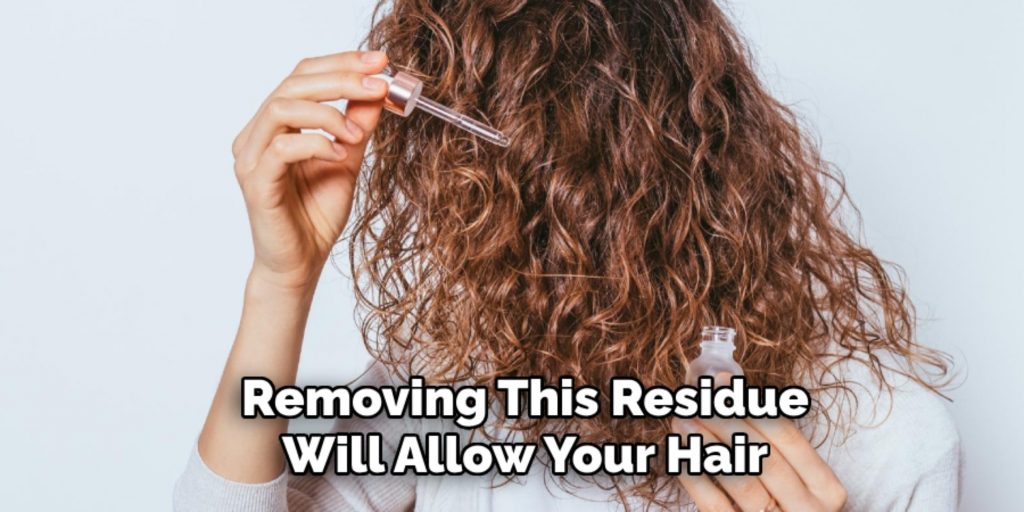
Once you have gathered all the necessary items, follow these steps to remove dimethicone from your hair:
10 Easy Steps on How to Remove Dimethicone From Hair
Step 1: Clarify Your Hair
Start by thoroughly wetting your hair with warm water. The warmth will open up the hair cuticle, allowing the clarifying shampoo to penetrate deeply and effectively break down the dimethicone buildup. Squeeze a generous amount of clarifying shampoo into your palm, depending on your hair length, and work it into a rich lather.
Apply the shampoo evenly throughout your hair, paying close attention to the roots and areas where product buildup is most noticeable. Gently massage your scalp with your fingertips in circular motions to loosen the residue and stimulate blood flow. Rinse your hair thoroughly with warm water to remove the shampoo and any loosened buildup. If you feel some residue is still left, you can repeat this step for a more thorough cleanse.
Step 2: Create an ACV Rinse
Mix 1 part apple cider vinegar with 3 parts water in a spray bottle. Shake well to mix the solution thoroughly. ACV is known for its clarifying properties and can help dissolve any remaining dimethicone buildup while balancing the scalp’s pH levels.
Step 3: Apply the ACV Rinse
Once your hair is thoroughly cleansed of shampoo, section it into manageable parts for even application of the ACV rinse. Hold the spray bottle about 6 inches from your hair and spray the solution throughout, ensuring it reaches the roots, scalp, and hair strands. Focus primarily on areas with visible buildup or oiliness. After applying, gently massage the rinse into your scalp with your fingertips to encourage absorption and ensure proper distribution.
Let the rinse sit in your hair for 3–5 minutes to allow the apple cider vinegar to break down any remaining buildup and restore your scalp’s natural balance. Finally, rinse your hair thoroughly with cool water to seal the cuticle and add shine. The result will be refreshed, lightweight hair free of dimethicone residue.
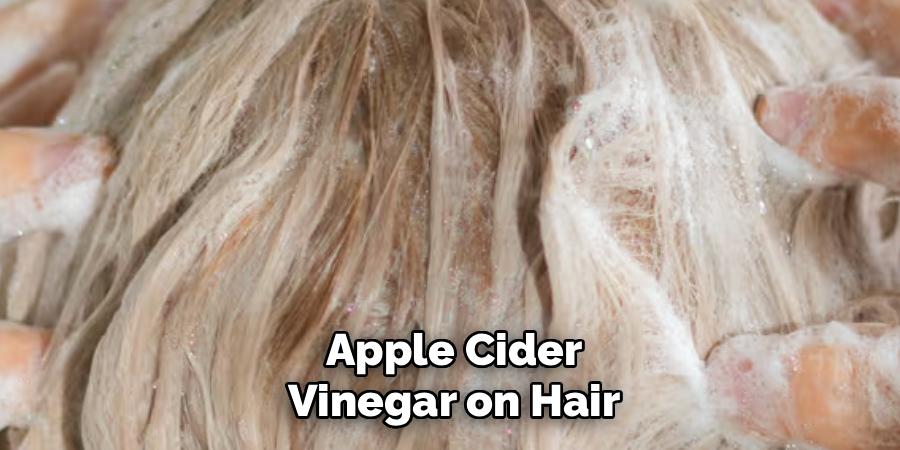
Step 4: Use Baking Soda as a Scrub
To tackle stubborn buildup and deep-clean your scalp, baking soda can be used as an effective scrub. Start by creating a paste using 1-2 tablespoons of baking soda mixed with water until it reaches a slightly thick consistency. Dampen your hair and section it into parts to ensure an even application. Apply the baking soda paste directly onto your scalp and hair in sections, focusing on areas with noticeable residue.
Gently massage the paste in circular motions using your fingertips to exfoliate the scalp and loosen the buildup. Be careful not to scrub too harshly, as this could irritate your scalp. Once you’ve treated all sections, allow the scrub to sit for 1-2 minutes to enhance its cleansing effectiveness. Rinse thoroughly with warm water to remove all traces of baking soda. Follow up with a conditioner to restore moisture and maintain a smooth, healthy finish.
Step 5: Incorporate Regular Apple Cider Vinegar Rinses
Consider incorporating apple cider vinegar (ACV) rinses into your routine to maintain a healthy scalp and remove any lingering product buildup. Mix 2-3 tablespoons of ACV with a cup of water to create your rinse solution. After shampooing, slowly pour the mixture over your scalp and hair, ensuring even distribution.
Gently massage your scalp to help the vinegar break down residue and restore the scalp’s natural pH balance. Leave the solution for 3-5 minutes before thoroughly rinsing with cool water. This step helps your hair feel refreshed, smooth, and shiny while promoting scalp health.
Step 6: Try a Weekly Deep Conditioning Treatment
To keep your hair nourished and well-moisturized, incorporate a deep conditioning treatment into your routine once a week. Choose a deep conditioner or mask suited to your hair type and apply it generously from mid-length to ends, avoiding the scalp to prevent buildup.
Leave the treatment on for 10-20 minutes, or as directed on the product, to allow the nutrients and moisture to penetrate deeply. For enhanced results, consider covering your hair with a shower cap and applying gentle heat with a hairdryer to open the hair cuticles. Rinse thoroughly with cool water to seal the moisture in and enjoy softer, healthier-looking hair.
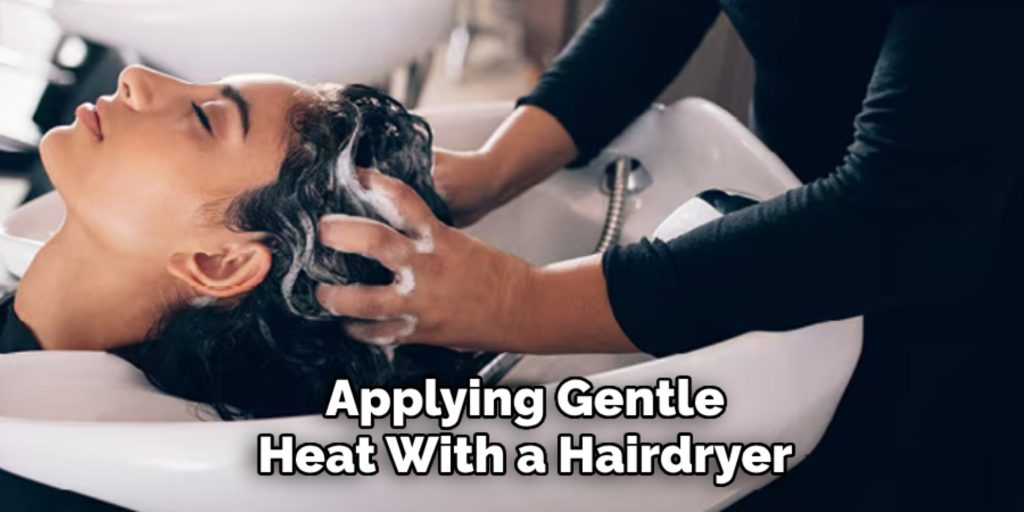
Step 7: Protect Your Hair from Heat Damage
To maintain healthy hair, it’s essential to shield it from excessive heat styling. Before using tools like blow dryers, straighteners, or curling irons, always apply a heat protectant spray or serum to create a barrier between your hair and the heat.
Use styling tools on the lowest practical temperature setting to minimize damage, and try to limit heat styling to special occasions or a few times a week. Additionally, consider air drying your hair or using heat-free styling methods whenever possible to keep your strands strong and resilient.
Step 8: Trim Your Hair Regularly
Regular trims are vital for maintaining the health of your hair and preventing split ends from traveling up the hair shaft. Aim to trim your hair every six to eight weeks to keep it looking fresh and promote healthy growth. Even if you’re trying to grow your hair longer, removing damaged or split ends will ensure that your hair stays strong and resilient over time.
Step 9: Nourish Your Hair with a Balanced Diet
Healthy hair starts from within, and maintaining a balanced diet can significantly impact the strength and growth of your hair. To promote hair health, incorporate foods rich in vitamins and minerals, such as biotin, vitamin E, omega-3 fatty acids, and iron.
Nutrient-dense options like leafy greens, nuts, eggs, fatty fish, and avocados are excellent choices to support shiny, strong, and resilient strands. Staying hydrated is also essential, as proper hydration ensures that your scalp and hair follicles remain healthy.
Step 10: Protect Your Hair from Heat Damage
Excessive heat styling can lead to dryness, brittleness, and long-term damage to your hair. To minimize the impact of heat, always use a heat protectant spray or cream before using hot tools like blow dryers, curling irons, or straighteners.
Additionally, try to limit the use of heat styling tools by opting for air-drying or heat-free styling methods whenever possible. Taking these precautions helps preserve your hair’s moisture, elasticity, and overall health.
Following these ten steps can effectively remove product buildup and maintain a healthy scalp and hair.
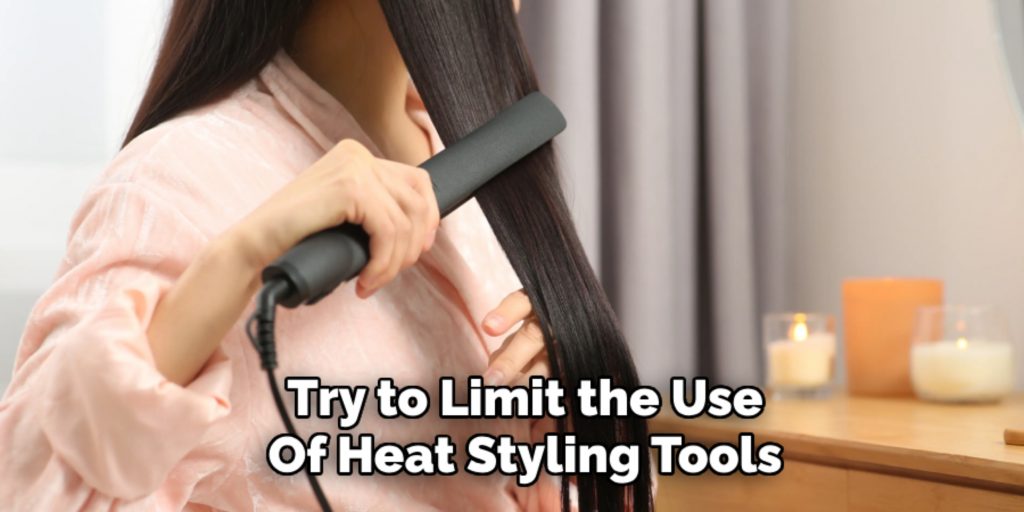
Conclusion
Regularly removing product buildup is crucial for maintaining a healthy scalp and promoting hair growth. By incorporating these natural methods into your routine, you can effectively cleanse and nourish your scalp and hair to keep them looking their best every day. You can enjoy refreshed, rejuvenated hair with natural shine and volume with extra care and attention.
Hopefully, the article on how to remove dimethicone from hair has provided you with useful tips and tricks to achieve a cleaner, healthier scalp and hair.
So keep in mind these tips and give your scalp the love and care it deserves. Happy Scalp, Happy Hair! Thank you for reading!
About the Author
Jane Hubbard is a passionate beauty expert with a wealth of experience in makeup, hair, and overall beauty techniques. After years of working as a hairdresser specialist, she followed her entrepreneurial spirit and started her own consultancy business.
Jane has always been driven by her desire to help others feel confident in their own skin, and she does this by sharing her knowledge, experiences, and practical beauty tips. Through her consultancy, she empowers individuals to embrace their unique beauty, offering tailored guidance that boosts both self-esteem and personal style.
Professional Focus
- Specializes in makeup, hairstyling, and beauty consulting.
- Provides personalized beauty advice, tips, and techniques to help individuals feel confident in their appearance.
- Dedicated to staying up-to-date with the latest industry trends and developments.
- Passionate about creating a comfortable and empowering experience for every client.
Education History
- University of Craft and Design – Bachelor of Fine Arts (BFA) in Woodworking and Furniture Design
- Woodworking Apprenticeships – Extensive hands-on training with skilled craftsmen to refine carpentry and furniture making techniques
- Online Courses & Masterclasses – Continued education in advanced woodworking techniques, design principles, and specialized tools
Expertise:
- Makeup artistry, hairstyling, and beauty consulting.
- Personalized beauty techniques to enhance confidence and self-expression.
- Educating clients on how to maintain their beauty routines at home.
